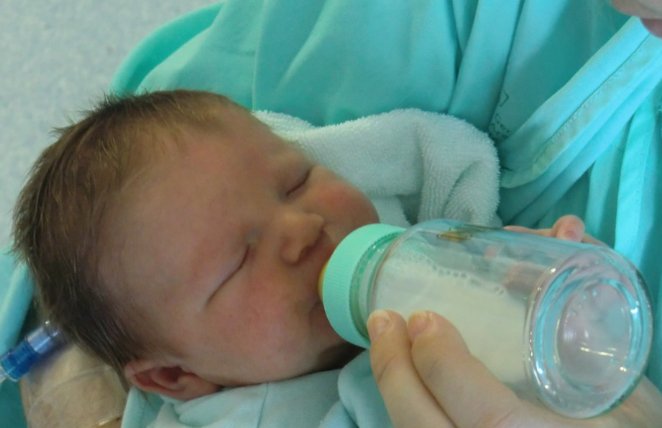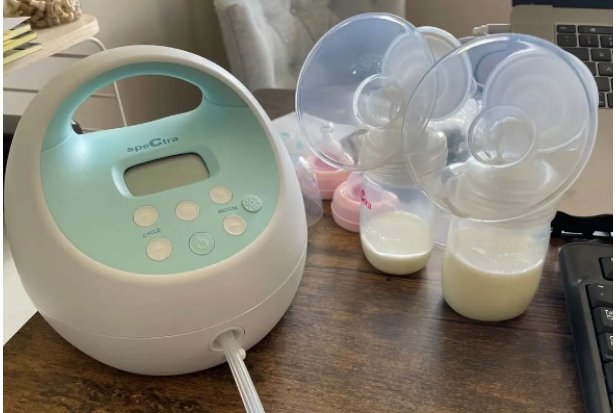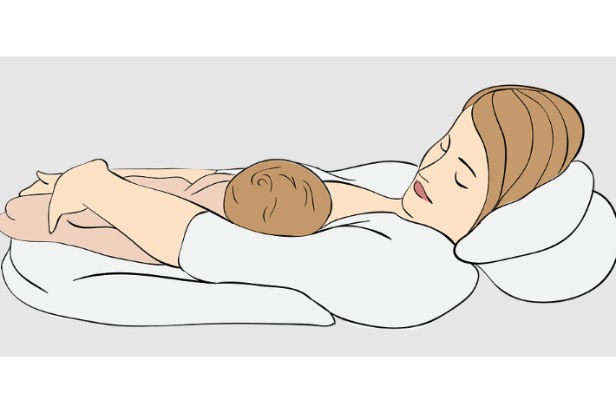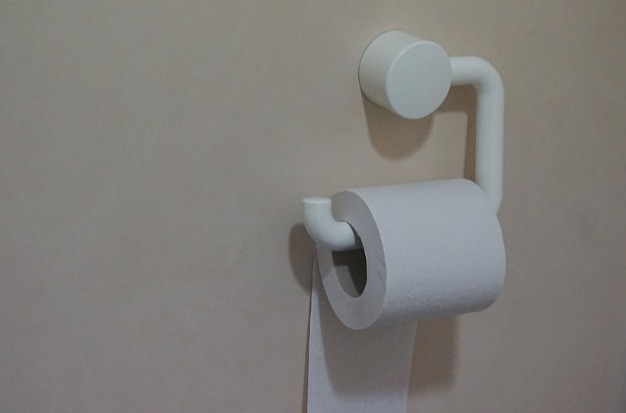It’s simple to figure out when to replace breast pump components. To learn everything you require to keep the components of your pump safe and clean, continue reading.
How Do I Dispose of Old Parts?
Your local authority can recycle breast shields, collection bottles, and other plastic parts of your milk collection kit. Make sure to sterilize them first. You can throw silicone components, such as membranes and valves, in with your regular municipal waste. A designated electronics recycling facility in your area will accept pump motors for recycling. Breast pumps shouldn’t be thrown out with the regular trash.
When to Replace Breast Pump Parts
The membranes need to be replaced every two months if you pump once a day. Likewise, if you pump more frequently, every two to four weeks. A general rule of thumb is that you should replace the membrane if you notice that it does not lay flat against the valve.
The duct valves need to be replaced every one to three months, while the backflow protector diaphragm needs to be replaced every three to six months.
As for the tubing, it needs to be replaced occasionally. Moisture shouldn’t be able to enter the tubing thanks to the backflow protector. However, it is advised to replace the tubing if moisture does get inside. The tubing cannot be sterilized, and it must always be kept completely dry since moisture can harm the motor.
Lastly, you want to replace the breast shield every six months, if you exclusively pump, or as needed, if you pump less frequently. Watch out for accumulation or residue in the shield’s fissures and cracks. You can learn more about how to start receiving your Milkzoom boxes by visiting the 1Natural Way website.
When to Replace Breast Shields
The portion of your pump that fastens to your breast is called a breast shield or flange. You should make sure you are using the right size breast shield because they come in different sizes.
Your breast shields should be changed roughly every six months if you exclusively pump. If not, you can change them as necessary. If the plastic on your breast shields appears to be warping or cracking, you should replace them right away.
When to Replace Shield Connectors
The components known as shield connectors join your milk collection bottles, tubing, and valves to your breast shields.
Shield connectors should be changed every six months, just like breast shields if you only pump. You can switch them out as necessary if you pump fewer than four times per day.
Additionally, if you notice any warping or cracking in the plastic of your shield connectors, you should replace them right away.
When to Replace Breast Pump Valves
Your breast pump’s valves play a key role in generating the suction that releases your breastmilk.
According to the kind of breast pump you have, there are a few different valves. Hard plastic valves with membranes needed to create suction are most likely found in Medela pumps. The soft silicone valves, also known as duckbill valves, that come with Spectra pumps are installed.
Duckbill Valves
Duckbill valves need to be replaced a little more frequently than other components because they are made of silicone. Due to their greater propensity to stretch out over time, silicone parts require more frequent replacement.
If you only pump, you should swap out your duckbill valves every 4 weeks or so. These valves should be changed after 2-3 months of use, though, if you don’t pump exclusively.
Replace your duckbill valves right away if you see signs of visible stretching or warping.
Medela Valves
Duckbill valves need to be replaced more frequently than Medela valves because they are made of hard plastic.
If you exclusively pump, you should swap out your Medela valves every six months or so. However, you can change these valves as necessary if you don’t only pump.
Replace your Medela valves right away if you see signs of warping or cracking.

When to Replace Valve Membranes
The tiny white flap that connects to the hard plastic valves is a valve membrane. The valve membranes in your breast pump function like duckbill valves and contribute to the suction you feel when using it.
The valve membranes must be changed every 2-4 weeks if you only pump. Valves membranes can be changed every two months if necessary.
Similar to duckbill valves, you should replace your valve membranes right away if you see any signs of visible stretching or warping.
When to Replace Tubing
Your pump’s tubing is the component that connects the motor and shield connectors. The valves and the breast pump tubing combine to produce the necessary suction.
You might see a small amount of condensation where the tubing connects to the connector when using your breast pump. When you disassemble your pump, the condensation should evaporate. However, you shouldn’t be getting a lot of water or breastmilk in your tubing. The tubing needs to be replaced right away if this occurs, or if you notice mold or tears in it.
Whether you exclusively pump or not, you should change the tubing in your breast pump every three to six months of use.
When to Replace Backflow Protectors
Like duckbill valves, some breast pumps don’t use backflow preventers. You’ll notice that backflow preventers are required if you have a Spectra pump.
Backflow protectors basically do what they say they’re going to do—they stop breastmilk from recirculating into your breast pump’s tubing.
Backflow protectors must be changed every three months if you exclusively pump. These components must be replaced every six months if you pump fewer than four times per day.
When to Replace Milk Collection Bottles
Your breast pump includes milk collection bottles that you can swap out as required. It’s time to replace them if you notice any warping or cracking!
Why Do Breast Pump Parts Need to Be Replaced?
You might wonder why breast pump parts even need to be replaced when learning when to replace them. There are two main reasons why you should replace your breast pump parts:
Loss of Suction
To take good care of your pump is a key reason why you should replace the parts on your breast pump. A small amount of wear and tear is caused on your machine each time you use your pump.
A loss of suction while pumping may result from this normal wear and tear. You won’t be able to pump as much milk as you once did if your suction is inadequate while pumping breastmilk.
It can be devastating to realize that you aren’t producing as much milk as you once did, and it’s common for women to believe that their supply has decreased.
You can feel more at ease knowing that your pump is functioning as best it can when you routinely replace the parts.
Hygiene
Hygiene concerns are the second justification for replacing the components on your breast pump. The components of your breast pump need to be as clean as possible because your breastmilk is probably a significant portion of your baby’s diet.
How Many Breast Pump Parts Do I Need?
Maintaining a sufficient supply of breast pump parts on hand at all times is a crucial aspect of pumping breast milk.
When pumping, a good rule of thumb is to have at least two spares for each part of the breast pump.
You should have enough extra parts on hand, especially when pumping exclusively, to lessen the strain of having to wash parts so frequently.
You won’t have to be concerned about a component of your one and only set of breast pumps breaking and leaving you without a backup if you have enough extra parts.
Conclusion
Depending on how frequently you pump throughout the day will determine when to replace your breast pump components. The 90-day rule is a good one to follow when replacing your pump’s parts. Having said that, remember that one of the main reasons for low milk supply is worn-out breast pump components. This is due to the fact that parts can degrade over time and cause a loss of suction when pumping. Since you are producing less breast milk over time, a loss of suction may eventually affect your supply. If this occurs, realize it’s not your fault and replace the problematic parts as soon as possible to fix the problem.
Frequently Asked Questions
How Often to Replace Backflow Protector Spectra
For instance, Spectra pumps have them while Medela pumps do not. Backflow protectors should be changed every three months if you pump three or more times daily. Replace every six months if you only pump twice daily or less.
How Often to Replace Medela Valves
Medela breast pumps frequently employ these valves. Once more, based on usage frequency, both the white membrane and the plastic valve need to be changed every two to eight weeks. If the valve is harmed or cracked, replace as required.
How Often to Replace Duckbill Valves
Duckbill Valves must be changed every one to three months. -Keep an eye out for any tears or cracks that might indicate that you need to replace your flanges right away.
Do I Really Need to Replace Parts as Often as This?
Yes, to ensure that your pump is functioning properly and that you are draining as much as you can during each pumping session. The aforementioned recommendations are based on two types of pump users: those who exclusively express (moms who use their pumps 6–8 times per day) and those who pump 1-3 times per day (such as mothers who pump while working and direct latch feed at home). If you pump less frequently than that, you might find that parts last a little bit longer; however, always keep an eye out for signs of wear and tear, such as diminished suction, slurping noises, changes in shape, and tears.



